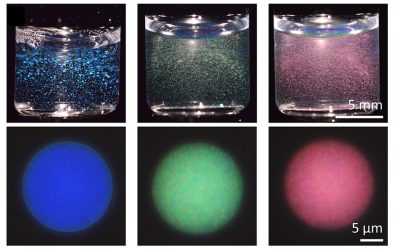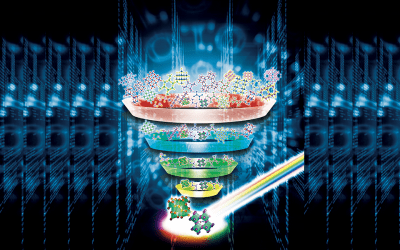A combination of stimuli-responsive pigment cells, including pigment granules and iridophores, enables many living creatures to precisely manipulate their color depending on the environmental conditions—an inspiration for the development of synthetic colors.
In their article in Small, Dr. Yukikazu Takeoka and colleagues from Nagoya University present a technique to reversibly control the color of materials.
Spherical colloidal silica crystals of various sizes were distributed on a transparent glass. These crystals appear white when a white background is used, and colored on a black background.
Addition of carbon black (CB) to the silica particles enhanced the vibrancy of the structural color against both white and black backgrounds.
Ultraviolet (UV) light irradiation alters the structure of the photochromic pigments in the crystals, and the colors of the spherical colloidal silica crystals and pigments change slightly. After UV irradiation, the vivid colors of the samples are observed even on a white background.
However, after subsequent visible light irradiation, the photochromic pigments return to colorless on a white background.
This production of structural color is a step towards artificially colored materials and an understanding of color changes in living organisms.
To find out more about this technique for controlling color, please visit the Small homepage.

















